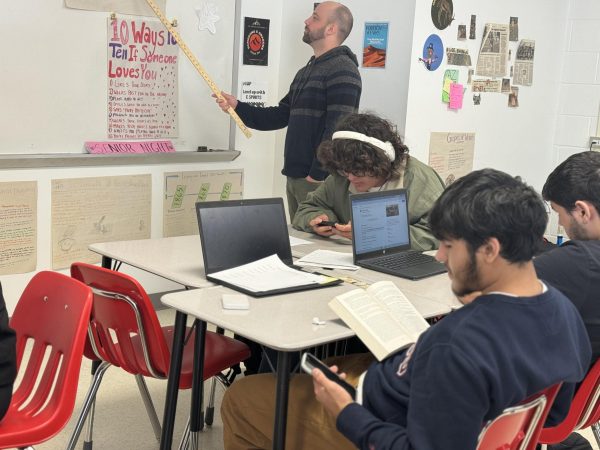Climate changing the world
In Sept. of this year, the east coast was hit with Hurricane Florence, whose aftermath is still affecting North Carolina and South Carolina today.
A month later, Hurricane Michael devastated citizens in Florida and Georgia.
Just last month, California was hit with fast spreading forest fires.
These are just a few of the dozens of natural disasters that took place in the U.S. in 2018.
All of these disasters combined have killed hundreds and displaced thousands. Damages that have resulted from the high winds, flash floods, and blazing fires are are believed to cost several billion dollars.
When all of this is considered, it’s only natural to wonder what could be causing the sudden outburst of natural disasters.
Most scientists agree that one major factor is linked to these occurrences: climate change.
Climate change is the change in weather patterns around the Earth due to an increase of the presence of greenhouse gasses, such as carbon, in the atmosphere.
Contrary to popular belief, climate change and global warming are not the same thing. Global warming is the increase of the Earth’s surface temperature, and is a cause of climate change.
Though there are some climate change deniers, there is strong and consistent scientific evidence that climate change is happening, and it’s happening rapidly.
Since 1880, Earth’s surface temperature has increased 0.9 degrees Celsius. The oceans are warming up.
Perhaps the most well known evidence of climate change is the shrinking of the Arctic ice caps.
A report done by NASA concluded that 95% of climate change since 1880 was caused by human activity.
When all this information is considered, how is climate change connected to extreme weather?
Climate change can be linked to floods, hurricanes, forest fires, and droughts very easily.
As Earth’s surface and atmosphere gets warmer, it is able to hold much more moisture. This moisture comes from rising sea levels, which are caused by melting ice near the poles.
This is why precipitation levels are so high nowadays, and why rain and snow can be seen in areas that are relatively dry.
All of these factors also increase the level of rainfall during hurricanes and tropical storms.
Scientists have also noted a link between an increase in the pressure of hurricanes and rising temperatures. A higher pressure means that the hurricane is likely to be deadlier.
NASA’s climate change study also stated that warmer temperatures only increase the length and severity of forest fires.
Climate change’s link to droughts is much more obvious.
In some areas, such as parts of the Southwest, Asia, and Africa, the number of droughts is expected to increase.
Why? Higher temperatures are increasing evaporation rates, meaning that water is being removed from Earth’s surface in these regions.
When all of this evidence is considered, it’s clear to see that there is an obvious link between climate change and the ever-worsening natural disasters.

Senior Suad Mohamed is currently the Co-Editor in Chief and this is her fourth year on staff. Last year, she was the In-Depth Editor. Besides The A-Blast,...






